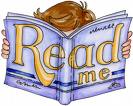Early Literacy


Early Literacy is a child’s ability to read, write, speak, compute, and solve problems at levels of proficiency necessary to function in a K-3 classroom. The West New York School District is committed to providing a comprehensive Early Literacy program for all our students.
What are some of the components of the Early Literacy program?
All of our classrooms are filled with many leveled books for all children no matter their reading level. We have also provided a library center stocked with books in each classroom. High quality literature that has been carefully chosen for our classroom libraries. Classrooms has active centers for student learning including: writing centers, listening centers, technology centers, and math centers.
Our K-3 reading period is a 90-minute uninterrupted block of time during which all types of reading-related and integrated activities are taught. Our reading classes provide flexible small-group instruction, which enables the teacher to work with several groups during the day that have similar needs. In West New York, we are striving for all children to become independent readers and writers who are knowledgeable, strategic, motivated, and socially interactive. Our goal is to provide an effective balanced literacy program to engage lift-long readers.
What can I do as a parent to support my child in school so that he/she will become successful and literate?
You can read to your child every night. If you don’t read or write in English it doesn't matter. Read in the language that you feel most comfortable. The West New York Public Library has a terrific children’s section filled with high quality literature. Take your youngster to the library and let him/her select books. Always show an interest in your child’s homework and make certain that you look it over every evening. Turn off the TV—allow only an hour or so of TV nightly. Most importantly, READ, READ, READ to your child! Before you read a story ask your child to predict what the story might be about. Talk about the pictures/illustrations. After you read a story, ask questions about the story. Have your child retell the story in sequence. Try to connect the story to your own life experiences. Reading is also an excellent way of bonding with your child. It says, I have time for you—you’re important to me. Let him/her see that reading is important and is a priority in your home.